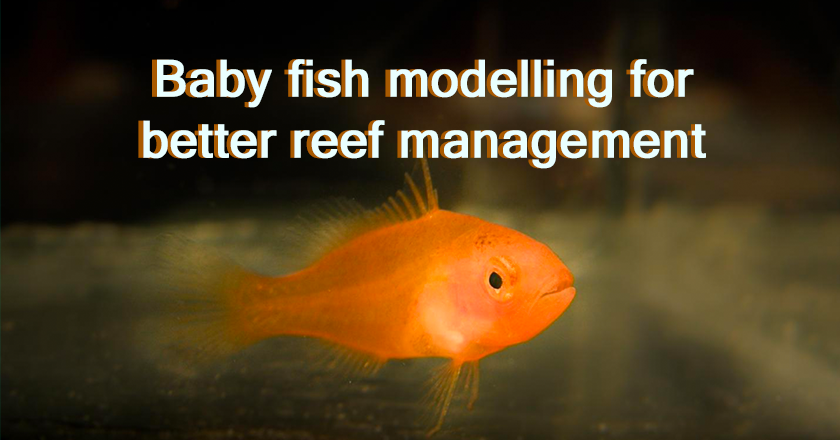


Scientists in Australia have created and verified the world's first computer model that predicts the lives of baby coral trout. It combines genetic and behavioural data with ocean currents and conditions around the Great Barrier Reef

Dr. Michael Bode, from James Cook University (JCU), who lead the study stated that “The behaviour of fish in their first few weeks after hatching can really influence where they eventually settle”. Knowing where an adult fish will spend its life is very important information for managing reefs and for people in the fishing industry. The scientists modelled the larval dispersal before the fish were even born, and once they had hatched. They used this to predict where they will end up when they mature.
To recreate the movements and patterns of the baby coral trout the model had to take into account many things. It considered, how fast they could swim, how ocean currents change over time and the depths to which coral trout can swim. To make matters more complicated, coral trout orient themselves in the water differently as they mature. This changes their swimming pattern and needed to be included as well.
Hard work and collaboration across the board allowed them to track the lives of nearly 2000 baby fish and over 800 adult fish. The researchers enlisted the help of geneticists, marine biologists, and recreational fishers.
To identify the baby fish, Dr. Hugo Harrison (JCU) explained that they used “clever molecular work” to match the babies to their parents. This technique was also used to keep track of them. They knew from previous studies to limit the area in which they looked for the baby fish so that they didn't produce too much data to analyse. Even with a specially selected area, chosen to not contain too many different parent sets, there were still 69 parent-offspring relationships within the group they tracked. The fish were tracked over great distances which ranged from a few hundred meters to more than 200 km.
Using this model, scientists were able to confirm the importance of marine reserves in maintaining healthy fish populations. Marine reserves are protected areas where fish populations are conserved, areas that are closed to all forms of fishing. According to a recent report on larval movement, while marine reserves can account for as little as 1/3 of the area of local reefs, they can produce up to half the juvenile population of fish. If correctly protected these reserves can significantly help to replenish fish stocks. These are important for both eco-tourism and local fishing operations. Data from this model can also be used to aid in the design of networks of marine reserves. Connected coral reefs and reserves allow for more movement of marine life and higher biodiversity. Dr. Bode concluded, “Our model proves that the Great Barrier Reef's no-take zones are connected with invisible threads,”. Building on this Dr. Harrison noted that knowing and understanding how these reefs are connected can help to “identify which areas are likely to be most productive and need protecting,”. This information would be useful for both reef mangers and local fishers.